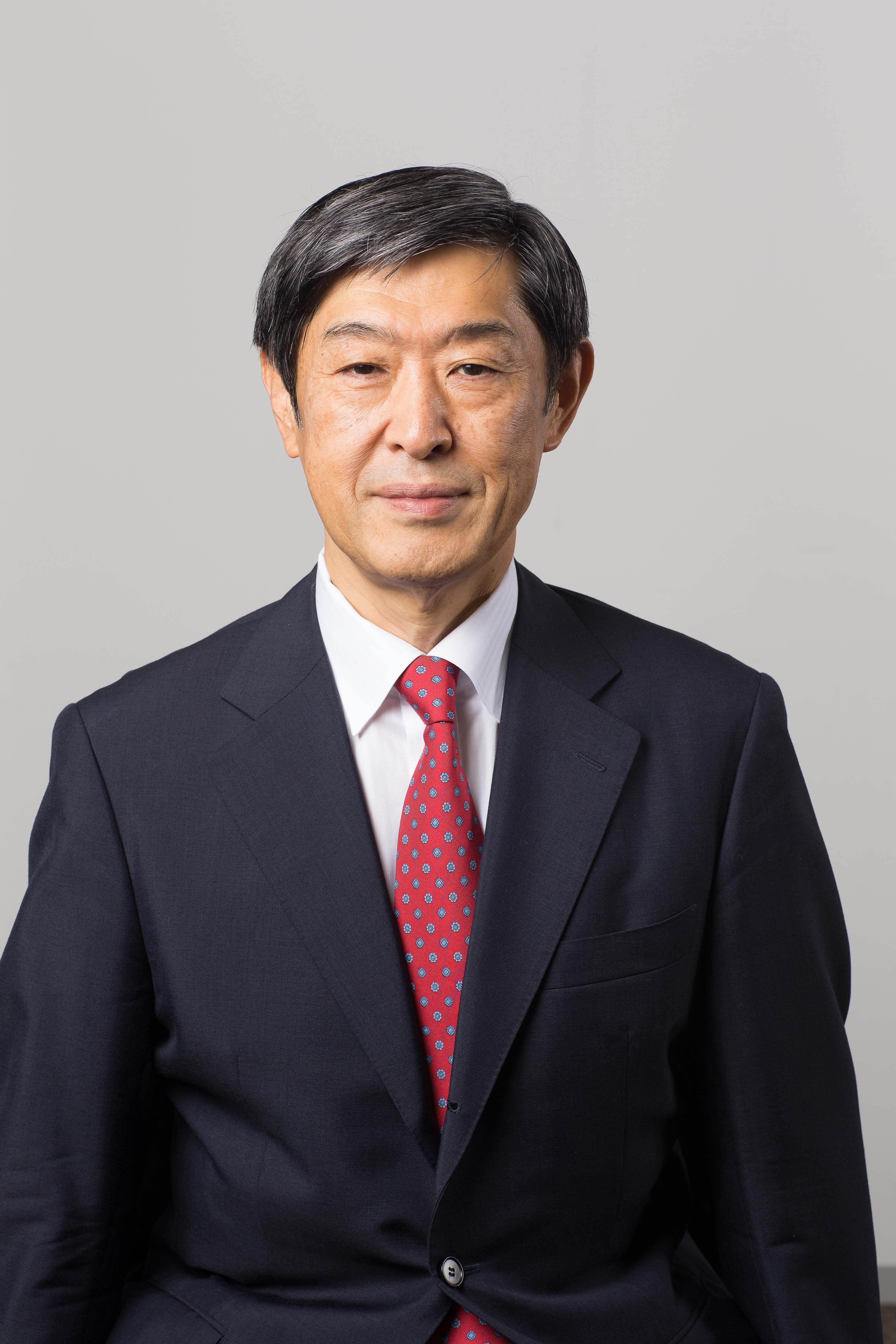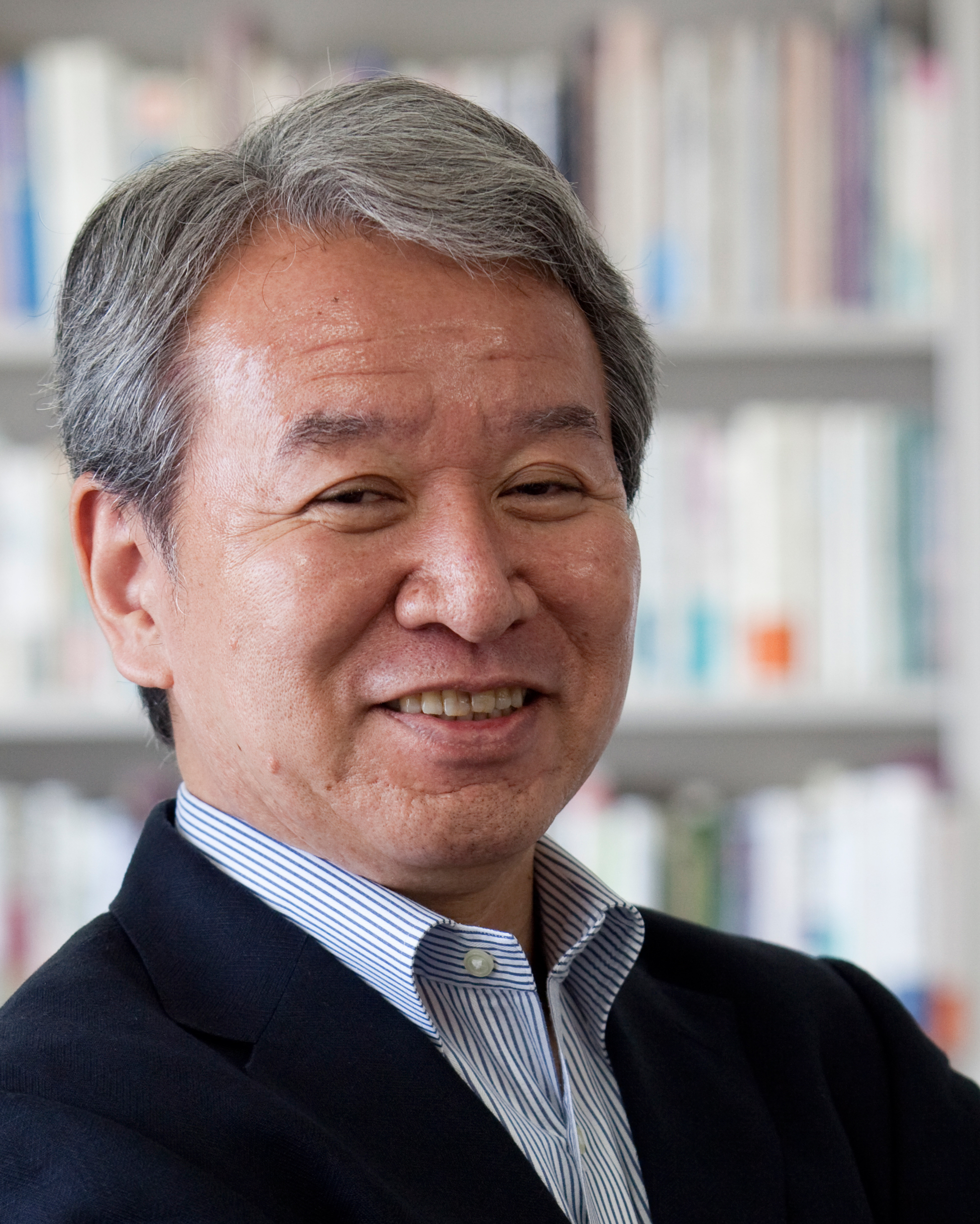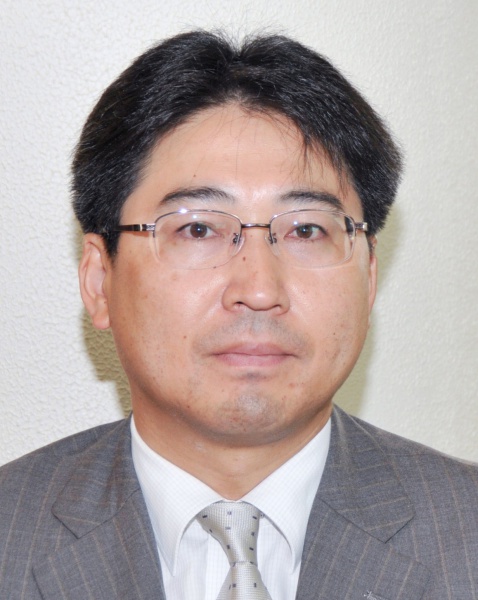The Japan Coast Guard protects the Senkaku Islands to the last
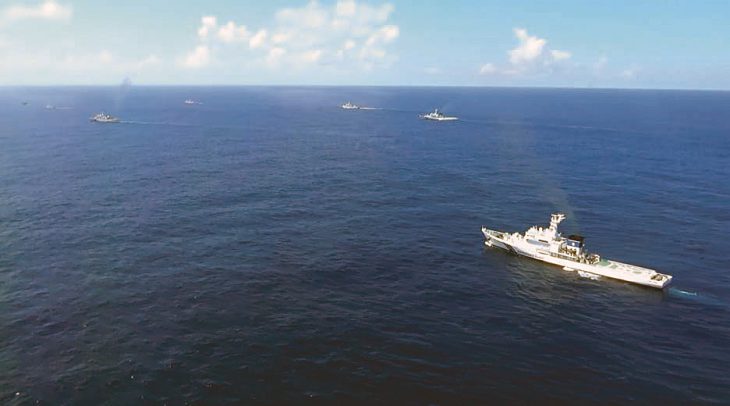
On August 5, Chinese fishing boats and official vessels encroached upon Japanese territorial waters around the Senkaku Islands. The Japan Coast Guard dispatched patrol vessels for warning.
PHOTO: COURTESY OF THE JAPAN COAST GUARD
The first “career Commandant” of the Japan Coast Guard speaks about the field operation for the guard of territorial waters.
Sato Yuji, who is 62 years of age, held office as the Commandant of the Japan Coast Guard for three years until June this year. He attracted public attention for his appointment as the Commandant of the Japan Coast Guard, a post reserved for career officials of the Ministry of Land, Infrastructure, Transport and Tourism, as the first career commandant. We interviewed the commandant, who knows a great deal about field operations and the reality surrounding Japan’s territorial waters.
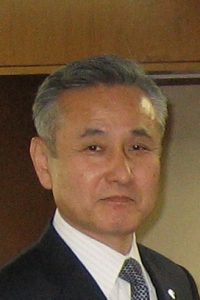
Sato Yuji, former Commandant of the Japan Coast Guard
On July 12, the Permanent Court of Arbitration concluded that China had “no legal basis” to claim the so-called Nine-Dash Line, whose sovereign rights China claims over almost all waters of the South China Sea. China insists that this international court ruling is invalid, but it can be considered a landmark ruling in that an international tribunal made a clear judgment about a violation of interests in the South China Sea in terms of international law.
In recent years, China’s maritime advancement has also caused numerous incidents in Japan’s neighboring waters, such as the East China Sea.
Japan has to continue to protect its sovereignty through a non-military means of law enforcement without increasing tensions with China. It is the Japan Coast Guard that confronts China at the maritime forefront. When I was Commandant of the Japan Coast Guard, I paid the greatest attention to what measures to take for the waters around the Senkaku Islands.
It was stressed that I was a “career commandant” when I assumed office, but I was not strongly conscious of this. Needless to say, the fact that I had hands-on operational experience was a significant advantage.
For example, regarding the Chinese issue, I guarded the territorial waters around the Senkaku Islands for four years from 1997, so I thoroughly understand how the officials working in the waters of the islands feel, what they are worried about and what they want.
While I was working in the field, a private group called the Baodiao Association in Taiwan and Hong Kong, which claims that the Senkaku Islands are an inherent part of the territory of China, descended on the waters around the islands in swarms aboard fishing vessels every spring and fall. They were radical activists who carried out intimidating demonstrations or landed on the islands.
They even amounted to up to 30 to 40 ships in some cases and we, the officials of the Japan Coast Guard, had to gather 50 to 60 ships and rush to the sites. At that time, I was the leader of a fleet of just under 20 ships targeting a ship aboard which the masterminds of the activists were located. But we had to work as part of policing activities. We regulated the cruising routes by surrounding the Chinese ships with Japan Coast Guard vessels, or sprayed the Chinese activists with water cannons.
Our mission in the waters of the Senkaku Islands was extremely tough. They were distant waters, and we had to fight wild waves in a storm at sea. The activists were aboard small fishing vessels, and the confrontation ended after a day or two. But we moved around and around at the operation sites, and we could neither sleep nor eat at all.
We were unable to carry out sufficient operations using only the ships of the 11th Regional Coast Guard Headquarters in charge of the waters around the Senkaku Islands, so we requested reinforcements—from Hokkaido in the north and Kyushu in the south. However, dispatches from Hokkaido were long-distance ones that required as many as five days for a one-way trip. The dispatched officials had to stay at the dispatch sites for more than a month, which made it impossible for them to see their families and made it difficult for them to contact their families. This was a fairly heavy psychological burden.
Looking back at China’s maritime advancement over about twenty years from then until today, China did not come to the fore as a nation while I was working at the forefront of the Senkaku Islands. China still had not developed this degree of national power.
A surprising case of coral poaching
However, things started to change around 2008, when Hu Jintao came to power as President of the People’s Republic of China. Suddenly, Chinese public vessels began to intrude into the territorial waters around the Senkaku Islands; after September 2012, when the Japanese government acquired and took possession of three of the islands, Chinese public vessels began to drift constantly through the waters.
Subsequently, China declared its “Sea Power Policy” in November 2012. We saw the reversal of the gross domestic product (GDP) between Japan and China in 2011, and I had the impression that China made that move as a result of thorough preparations.
It was in August 2013, the year after China declared the Sea Power Policy, that I was appointed as Commandant of the Japan Coast Guard.
Immediately after I had assumed the post, numerous Chinese public vessels appeared all the time and invaded the Japanese territorial waters six to eight times a month. We saw the extreme rise of tensions in the waters, and I understood that the Japan Coast Guard’s role was to alleviate maritime tensions to create an appropriate environment for diplomatic negotiations.
Chinese acts of violating territory and maritime interests also include several other patterns.
One of these patterns is maritime investigation. China pressed ahead with investigations without gaining the agreement of neighboring countries for the purpose of exploring maritime resources, or carried out investigations in locations or during periods of time that differed from the advance notifications.
The most frequent pattern was illegal operations by Chinese fishing boats. Exclusive economic zones (EEZ) are guaranteed national sovereign rights to fishing, but Chinese fishing boats carried out illegal operations in other countries’ EEZ or territorial waters.
In this way, China gradually invaded other countries’ sovereign rights and created an accumulation of faits accomplis as if they were Chinese territory, territorial waters and EEZ before anyone noticed. Such non-military means was a new tactic invented by China.
I would like to introduce a case of crash between a patrol boat of the Japan Coast Guard and a Chinese fishing boat in the waters of the Senkaku Islands in 2010 as an incident that attracted a great deal of public attention. At that time, I was assigned to the 10th Regional Coast Guard Headquarters in Kagoshima and was in a position to send a patrol boat into the waters around the Senkaku Islands. I was surprised to see the accident on TV. The disclosure of a video recording of the crash scene drew a lot of public attention to the case, but as an official who worked in the field, I found that the crash was very dangerous.
In 2014, we also saw repetitions of illegal operations by Chinese coral fishing boats in the waters around the Ogasawara Islands. The Japan Coast Guard was surprised by China’s expedition to the Ogasawara Islands.
The inhabitants of the Ogasawara Islands were terrified by the Chinese boats, and we wanted to bring the situation under control as quickly as possible. But the waters were extensive and there were too many fishing boats. We sent a large number of ships and cooperated with the fishery patrol boats of the Fisheries Agency and the Tokyo Metropolitan Government. However, it was about one thousand kilometers from the main island of Japan, and it took about thirty hours to get there, even with a fast ship. It took a long time to allay the confusion, but a strong request from the Foreign Minister prompted the Chinese fishing boats to withdraw quickly. In the end, we detained ten Chinese boats and arrested eleven Chinese within the territorial waters.
Currently, Japan’s neighboring waters are surrounded by Chinese fishing vessels. About one thousand vessels are constantly cruising through the waters around the Senkaku Islands where fishing boats are concentrated, and many Chinese fishing boats can also be seen in the Sea of Japan, off the coast of Hokkaido and in the Pacific. Just as Japanese and South Korean fishing boats operated actively during the period when these countries enjoyed constant economic growth, Chinese fishermen are now working actively to support the national economy.
In fact, many of these fishing boats have the Chinese version of a Global Positioning System (GPS) called “Hokuto,” which was provided by their government. This is equipped with a mailing function, which enables every single boat to notify the mainland of its position or to receive email messages sent to all boats. Even private fishing boats are connected to the Chinese government, and there is the possibility of crew members who can be referred to as maritime militia being aboard the ships. Accordingly, it is important to distinguish between them and the other crew members at the scene, and we need to approach these fishing boats with a great deal of caution.
Development of a full-time structure for guarding and defending the Senkaku Islands
We have seen a gradual decrease in the frequency of intrusions into territorial waters by Chinese vessels in comparison with the time when I initially assumed office as Commandant of the Japan Coast Guard. We cannot afford to be optimistic, however.
The Japan Coast Guard has coped with many cases, such as a diplomatic game over the Syngman Rhee Line in the 1950s, shortly after the end of World War II, a guard for the maritime transportation of plutonium in the early 1990s, and North Korean spy ships in 2001. But these were just temporary issues and were of a different nature from China’s maritime advancement. The issue of China will continue for the next fifty to one hundred years.
In this situation, how should we deal with China?
First, we should build a sufficient nationwide guard system.
At the end of the last fiscal year, the Japan Coast Guard deployed ten large ships on Ishigaki Island in a full-time structure for guarding and defending the Senkaku Islands, and also developed two helicopter-carrier patrol vessels for the main island of Okinawa. By organizing multiple crew structures with these two ships, the Japan Coast Guard built a robust structure that is made up of fourteen ships. The Japan Coast Guard also built piers and lodgings on Ishigaki Island for about 600 officials, and the facility has now become the largest Coast Guard Office in Japan, surpassing Yokohama.
This structural development led to improvements in the working environment, such as no more need for long-term expeditions from other Regional Coast Guard Headquarters, including Hokkaido, which had become a frequent and common practice.
The government gave a great deal of consideration to the budgetary measures for the structural development of the Japan Coast Guard. The Japan Coast Guard cooperates very successfully with other related government organizations in joint activities and information sharing. For the handling of the Senkaku Islands, the Japan Coast Guard cooperated with the Cabinet Secretariat, the Ministry of Defense, the Ministry of Foreign Affairs, the National Police Agency and other related government organizations in determining a broad range of measures in advance, and also carried out joint training drills. The Japan Coast Guard built a structure for convening meetings at short notice in emergency situations and taking specific measures, which enables us to divide roles and cooperate in a way that makes a clear distinction from the past compartmentalized bureaucratic sectionalism.
We feel greatly encouraged by Prime Minister Abe Shinzo’s strong support for the Japan Coast Guard. He encouraged the officials who work at the forefront of Ishigaki Island and Naha, but we are particularly grateful to him for his attendance at the graduation ceremony of the Japan Coast Guard School in March this year, as the first prime minister to do so. In his speech at the ceremony, he gave the following praise: “Officials of the Japan Coast Guard who successfully accomplish their missions during tough field operations are the pride of the Japanese people.”
At the ceremony, we asked Prime Minister Abe for a specimen of his calligraphy for “法治平安”, meaning “peace by the rule of law” as a phrase that represents the increasingly important role of the Japan Coast Guard. The rule of law is also a key concept for contemplating measures against China: moves to induce China to adhere to rules based on international law.
China revealed its intention to ignore the abovementioned ruling on the South China Sea dispute made by the Permanent Court of Arbitration, claiming that it would not abide by the existing international law that had been created by the West. This suggests that China intends to make its own way according to its own rules as a major power, although the country has not actually declared this in so many words.
In 2013, China created the China Coast Guard as a maritime law enforcement organization. The China Coast Guard was founded by integrating the State Oceanographic Administration, which defends Chinese maritime investigation vessels, and the China Fisheries Law Enforcement Command (FLEC), which defends fishing vessels, with parts of the General Administration of Customs (GAC), which handles customs-related matters, and the China Marine Surveillance (CMS), which handles public security-related matters.
The China Coast Guard, which declares itself as such internationally, is the nominal counterpart of the Japan Coast Guard, but it differs from it in some respects.
In 2015, Chinese public vessels invaded the territorial waters around the Senkaku Islands a total of 35 times, as well as the contiguous zones, over a period of 240 days. According to media reports, Chinese public vessels also made repeated intrusions into Vietnamese and Malaysian territorial waters; both before and after the judgment made by the Permanent Court of Arbitration, Chinese public vessels obstructed the cruising courses of local fishing boats in the exclusive economic zone where the Philippines had been granted traditional fishing rights. It can be said that the China Coast Guard is a government organization that protects such Chinese vessels that violate international law.
At the Shangri-La Dialogue (known as the Asia Security Summit) two years ago, Prime Minister Abe said, “It is of essential importance to present accurate claims in light of international law. You should not resort to power and pressure when you make a claim. You should also seek to bring conflicts to peaceful resolutions wherever possible.”
This statement was supported by many Asian countries that are unable to counter the strong Chinese economic and military might. They look carefully at Japan’s action. We need to cooperate with other Asian countries with a keen focus on the recognition that now is the defining moment for deciding whether Asian waters will become a sea of “peace by the rule of law” or descend into lawlessness.
Onboard inspection of Soviet ships
To cope with this reality, Asian countries have created maritime law enforcement organizations one after another, modeled on the Japan Coast Guard.
As a matter of fact, it is stipulated by law that the Japan Coast Guard, the model on which other Asian countries created maritime law enforcement organizations of their own, may not be given the authority to perform military functions. It is an incomparable organization in the international context. The Japan Coast Guard is only equipped with the tools and devices necessary to make illegal vessels stop as a pure and simple policing organization.
This is different from the traditional Western model. The Japan Coast Guard was created in 1948 modeled on the United States Coast Guard, but it is critically different from it in that the U.S. Coast Guard is a paramilitary organization. In fact, the U.S. Coast Guard operated as part of the U.S. military forces during the Vietnam War and is equipped with missiles and other arms. Coast Guards also work as law enforcement organizations in normal times in other large countries, such as Russia and India, but they are expected to operate as military forces in the event of an emergency.
In other Asian countries, for many years it was the navies that carried out operations similar to those implemented by the Japan Coast Guard. But South Korea established the Korea Coast Guard (the current Regional Coast Guard Headquarters Coast Guard Stations) and Taiwan created the 7th Offshore Flotilla (the current Coast Guard Administration, Executive Yuan), and the Philippines (1998), Malaysia (2005), Vietnam (2013) and Indonesia (2014) followed suit. These moves are considered to have spread in line with China’s maritime advancement in the South China Sea.
The Japan Coast Guard has provided a range of technical guidance to Southeast Asian countries since 1969. This guidance ranges from maritime safety and security matters, including the building of lighthouses, the compilation of nautical charts, maritime rescue and oil control, to technical support, including methods of investigation and evidence gathering for cracking down on smugglers and stowaways, terrorism and piracy.
In addition, the National Graduate Institute for Policy Studies (GRIPS), the Japan International Cooperation Agency (JICA), the Nippon Foundation and the Japan Coast Guard Academy cooperated in initiating the “Maritime Security Policy Study Course” in fall last year as part of the support for capability building. The aim of this course is to grant master’s degrees as an arena for establishing common recognitions and promoting collaboration by acquiring knowledge of international law and learning the precedents of peaceful solutions with other Asian countries. All lectures are given in English, with ten trainees from Vietnam, the Philippines, Indonesia, Malaysia and Japan studying together. The students of the course are candidates for the future elites of each country, and the course is expected to build networks of future human capital.
The current atmosphere of the Japan Coast Guard is different from what it used to be when I joined the organization. The atmosphere was quieter and more peaceful before the Senkaku Islands disputes surfaced, except for the occurrence of unexpected incidents. The reason I joined the organization was quite simple: to be a pilot. Shortly after I had joined the organization, however, I realized that I would be forced to board a ship instead of realizing that dream, and that tempted me to quit. (Laughs)
The reason I did not quit was that I found it important to undertake surveillance of Soviet fishing vessels (in those days) in the section to which I was first assigned.
At that time, Japanese fishing vessels were often captured by the Soviet in the Sea of Okhotsk and other waters, and had outrageous fines of hundreds of millions of yen imposed on them. As a young Japan Coast Guard official, I worked hard with all my might to crack down on these Soviet seizures. I created mimeographed copies of practical-oriented crackdown manuals on my own and distributed them to my coworkers. I encouraged my colleagues to follow the specific procedures I had drawn up and successfully achieved a sharp increase in the number of arrests.
In those days, I often unmasked false records of fines of 200,000 yen. I conducted onboard inspections of Soviet fishing boats to check their operation diaries, and pointed out mistakes. Even when they begged me to give them a break, saying that they were just mistaken descriptions, I was relentless in arresting them as an investigator.
One winter, I dropped into the sea off the coast of Hokkaido. While I was approaching a ship by small boat to undertake an onboard inspection, the boat rocked and I fell into the freezing water, which had a temperature of 5 degrees. I was wearing a life jacket, but the radio transmitter, safety boots with iron plates in them, my gun and other equipment were so heavy that I could not prevent myself from sinking. The crew members aboard the boat were upset. When I took off my shoes, I started to float, but when they tried to lift me up forcibly from above, I hit my shin and was severely injured.
Cherry petals flown to Palau
As noted above, Asian waters have now entered a transformational phase and security is gaining greater weight in the mission of the Japan Coast Guard. This shows that maritime law enforcement is being recognized for its function as the third important factor in addition to the conventional methods of diplomacy and military means for security.
However, it does not bring any change to the significance of crackdowns on crimes, maritime rescue, the coordination of maritime traffic security and maritime investigations, including continental shelves, which are the main operations carried out by the Japan Coast Guard.
I remember experiencing many cases of disaster rescue operations while I was in office as Commandant of the Japan Coast Guard.
During our rescue operation after the volcanic eruption on Kuchinoerabu-jima Island in May last year, we helped the local islanders evacuate by using surveying ships and patrol boats. We rescued 107 local residents by helicopter following the Kinugawa River bank collapse due to heavy rain in September of the same year. We also supported the water supply and provided bathing services for the victims of the recent Kumamoto earthquake this spring.
In addition, in the aftermath of the Great East Japan Earthquake, we not only rescued victims who were left stranded aboard ships that were washed away by tsunami, but also helped secure the lanes of ships. The presence of ships and cars washed away by tsunami at the bottom of the sea changed the depth of the water, which was likely to cause large ships capable of carrying a massive amount of oil and supplies necessary for rescue operations to become deadlocked. It would have been impossible to secure cruising routes without the seabed surveys undertaken by the Hydrographic and Oceanographic Department of the Japan Coast Guard.
When Emperor Akihito and Empress Michiko visited Palau in April last year, they used a patrol boat of the Japan Coast Guard as a lodging.
Of course, it was the first such experience for the Japan Coast Guard. When we were asked to provide a ship by the Imperial Household Agency, we were surprised because we did not have a passenger ship. But thanks to the field officials’ attention to detail and attentive consideration, we were able to overcome several hurdles.
One particularly significant issue was how to facilitate nighttime helicopter flights. The gulf in which the ship where the Emperor and Empress stayed during their visit to Palau was anchored was in pitch-black darkness at night. The surrounding mountains were a hindrance to the landing of the helicopter in which the Emperor and Empress boarded the ship, and it was a significant challenge as to how to facilitate security. To cope with this situation, we installed light-emitting temporary buoys so that obstacles could be avoided by following the lights. In short, we created a makeshift offshore air route. Our officials came up with this idea after inspecting the site carefully, and we were struck with admiration.
I would now like to introduce an impressive story about the Emperor and Empress’s visit to Palau. Their visit took place in early April last year, but the support officials brought cherry petals from Tokyo to the island and placed the petals at monuments dedicated to the war dead on Peleliu Island. It was a very sophisticated idea. In addition, when they crossed between Angaur Island, another battlefield where fierce fighting was conducted, and Peleliu Island by patrol boat, they said a silent prayer on the ship, with the flag at half-mast. I have also heard that they presented a bottle of sake in advance at the monuments that the Imperial Couple visited to offer flowers later. This story of so much consideration brought me to tears.
I was so tense during the Imperial Couple’s visit to Palau that I have to confess shamefully that I had stomach cramps for the first time in my life two days after the successful conclusion of the visit. (Laughs) I was convinced that everything would go all right because my subordinates were so reliable, but I believe that I was unconsciously under pressure through a heavy sense of responsibility.
Currently, the Japan Coast Guard has to play an increasingly important role in many areas, including the Chinese issue. But I have no concerns about the future of the organization whatsoever.
In recent years, the Japan Coast Guard has had about 14,000 applications for a new employment quota of around 600. About 20% of successful applicants are female. This still comprises just 6% of the entire organization, but there are many cases where female officials achieve good honors. I expect that the percentage of women will continue to rise and that the organization will become more and more diverse.
What I feel most confident about is the fact that many young officials, both male and female, have the ambitious desire to protect Japan’s territory and territorial waters on their own. When I asked them why they wanted to join the Japan Coast Guard, they answered that the Senkaku issue had inspired them to join the organization. We saw the boom of the popularity of Umizaru, a comic featuring Japan Coast Guard officials that was later produced as a TV drama and movie. However, the increasing tension of international affairs appears to move the hearts of young people more strongly.
During my years as Commandant of the Japan Coast Guard, I fulfilled my duties by modeling myself on the self-sacrifice-minded field officials who are dedicated to the world and people, including both senior and junior members. After stepping down, I was put in the position of entrusting the junior members who serve the country in the public interest with the mission of protecting the future of Japan’s waters. I am very much looking forward to their outstanding performance.
Translated from “Shikinen-sengu, Samitto, Dento no keisho… Ise Jingu Daiguji Oini Kataru (The Chief Priest of Ise Jingu talks at length about subjects such as the Shikinen Sengu, the Summit, and the succession of the legacies),” Bungeishunju, August 2016, pp. 147-147. (Courtesy of Bungeishunju Ltd.) [August 2016]
